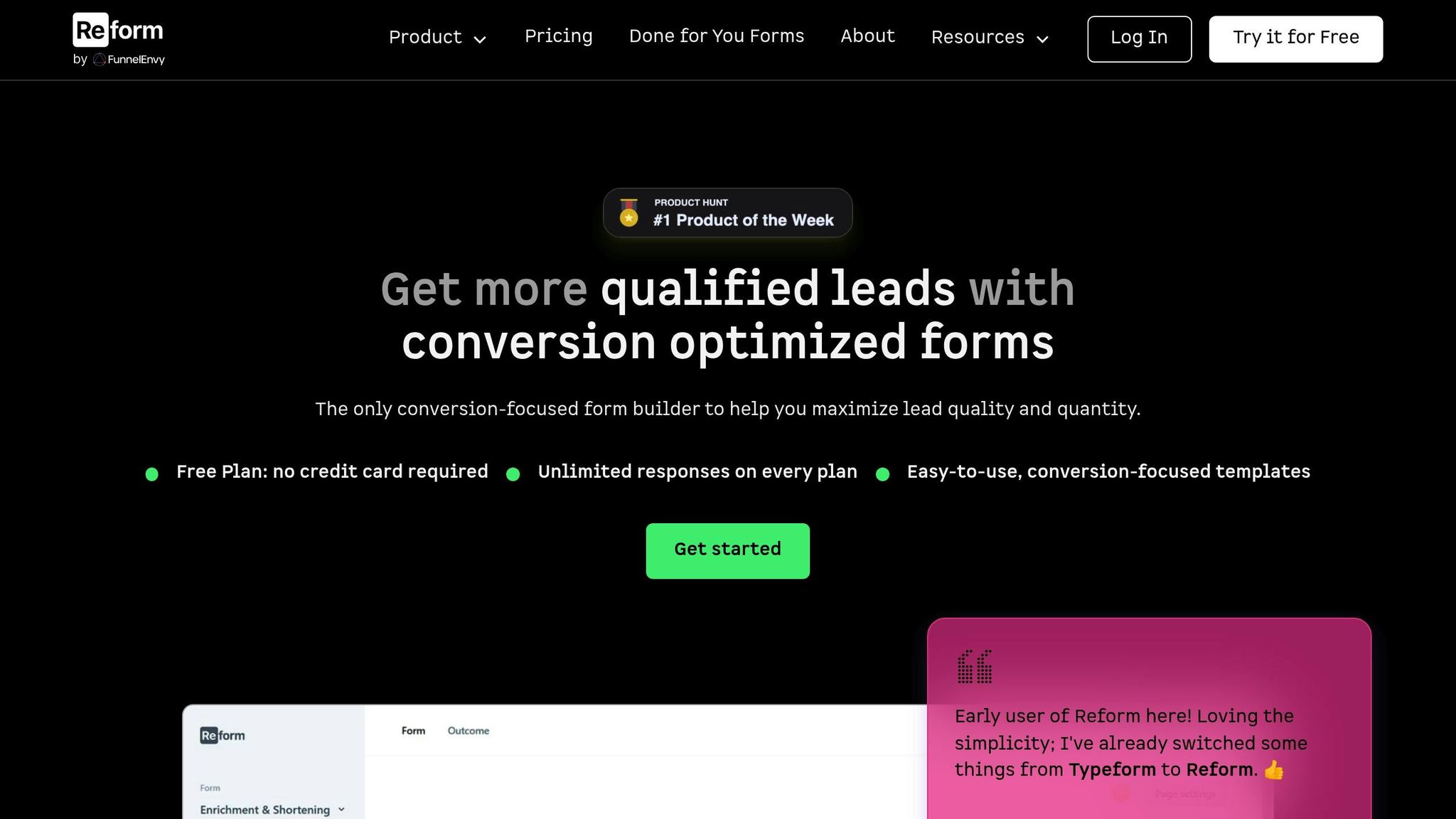Behavioral Tracking Effects on User Trust

Behavioral tracking collects user data to create personalized experiences, but it also raises privacy concerns. Here's a quick summary of what you need to know:
- How It Works: Tools like cookies, web beacons, and mobile tracking monitor user activity to tailor online interactions.
- Trust Challenges: 79% of users find it hard to understand how their data is collected or used, and 64% would switch providers if trust is broken.
- Privacy Expectations: 91% of users want control over their data, and 83% believe companies profiting from their data should compensate them.
- Transparency Matters: Clear communication about data use builds trust; 89% of users stay loyal to brands that prioritize transparency.
- Balancing Benefits and Risks: While tracking improves user experiences, privacy concerns and cybersecurity threats remain key issues.
The takeaway? Businesses must balance personalization with privacy to maintain user trust. Ethical data practices, clear consent options, and transparency are critical for building lasting relationships with customers.
How Does Email Event Tracking Enable Behavioral Targeting? - TheEmailToolbox.com
Key Research Findings on Behavioral Tracking and User Trust
Behavioral tracking has become a double-edged sword in modern technology. While it powers personalized experiences and boosts business performance, it also sparks serious concerns about privacy and security. Let’s dive into the research findings that explore both the advantages and challenges of this practice.
Benefits of Behavioral Tracking
Research highlights that personalized experiences, driven by behavioral tracking, can significantly improve user engagement. By analyzing how users interact with websites and apps, businesses can fine-tune their strategies, target campaigns more precisely, optimize conversion paths, and achieve better marketing ROI.
Interestingly, studies show that incorporating human-like design elements in technology fosters positive emotions and enhances perceived trustworthiness. In the health tech space, the numbers are telling: 66% of people now use health-related devices, and 72% rely on health-related apps for various needs. A closer look at ChatGPT reveals that trust plays a major role in its adoption, accounting for 50.5% of the variance in users' intent to use the platform. Users primarily turn to it for information gathering (36.1%), entertainment (33.4%), and problem-solving (22.2%).
Privacy Concerns and Drawbacks
Despite these advantages, privacy concerns cast a long shadow over behavioral tracking. Research shows that individuals' willingness to share personal health data decreases as their privacy concerns rise. The "black box" problem - where the inner workings of systems remain opaque - fuels fears of data misuse and erodes trust. This lack of transparency, coupled with concerns about fairness and accountability, is especially troubling for users of generative AI technologies.
Another key insight is the delicate balance of trust. Both excessive and insufficient trust in systems like ChatGPT can lead to negative outcomes, emphasizing the importance of building balanced, well-informed trust. Privacy concerns also strongly influence how people behave to protect their personal data, including adopting stricter privacy measures.
US Consumer Trends
In the United States, attitudes toward behavioral tracking are evolving as privacy awareness grows. A recent study found that 23% of internet users refuse to share personal information, while 53% are reluctant to trust tech companies with their health data. Rising concerns about AI and growing distrust in Big Tech reflect a broader anxiety about data privacy in an age of advanced tracking technologies.
This heightened awareness has led more consumers to scrutinize privacy policies and demand greater accountability from businesses. Research further shows that institutional trust and perceived comfort levels play a major role in determining whether individuals are willing to engage in self-tracking behaviors.
What Affects User Trust in Behavioral Tracking
Understanding what influences user trust in behavioral tracking is vital for businesses aiming to balance personalization with privacy concerns. Recent studies highlight key factors shaping how users perceive data collection, from transparent communication to adherence to regulations.
Transparency and User Consent
Open communication about data practices plays a major role in earning trust. Studies reveal that many businesses fall short in this area, with 40% of consumers distrusting brands with their data and many Americans feeling they lack control over their personal information. This underscores the importance of ethical, clear consent practices.
When users are given a straightforward "Reject All" option, over 60% opt to reject cookies. This shows that people value genuine choices over manipulative design tactics. On the flip side, 89% of consumers remain loyal to brands that prioritize transparency about data use.
Effective consent practices go beyond simply meeting legal requirements. Users need clear, easy-to-understand information about what data is collected, why it’s collected, and how it will be used. Dynamic consent - where users can update their preferences over time - has proven to be a successful strategy for maintaining trust.
Apple has stood out as a leader in this area. The company introduced a dedicated privacy section on its website, featuring a message from CEO Tim Cook emphasizing their commitment to user privacy. As Cook explained:
"At Apple, your trust means everything to us. That's why we respect your privacy and protect it with strong encryption, plus strict policies that govern how all data is handled….We believe in telling you up front exactly what's going to happen to your personal information and asking for your permission before you share it with us."
Facebook also took steps to simplify privacy controls by launching Privacy Basics in 2015, providing users with an easy-to-navigate resource for managing their data sharing preferences. These examples show how transparency and clear communication can foster trust.
But transparency alone isn’t enough - users also need to see the value in sharing their data.
Data Collection and User Value
Trust grows when businesses align data collection with tangible benefits. People are more willing to share their information when they understand how it directly improves their experience. Yet, 79% of Americans remain concerned about how their data is being collected, suggesting that many companies still struggle to communicate this effectively.
Reciprocity plays a key role here. When businesses demonstrate how data enhances the user experience - through better recommendations, stronger security, or more relevant content - users are more likely to engage with behavioral tracking.
The scope of data collection also matters. Users respond more positively when companies collect only what’s necessary for specific, clearly stated purposes. This approach not only builds trust but also minimizes privacy risks and regulatory complications.
The stakes are high: 48% of consumers have switched providers due to privacy concerns. Companies that strike the right balance between data collection and user value often see stronger customer loyalty and retention.
Legal and Social Factors
While transparency and perceived value build trust at the individual level, legal and social factors shape broader user confidence in behavioral tracking. Regulations like the California Consumer Privacy Act (CCPA) influence user expectations around data rights and corporate accountability. However, awareness remains limited - 97% of Americans report being asked to approve privacy policies, but only about 22% read them frequently. This gap between policy presentation and understanding makes it harder to establish informed consent.
Social perceptions also play a significant role. 72% of Americans believe that most of their online activity is being tracked, creating a baseline of skepticism that businesses must address. Demographic differences further complicate the issue: Black Americans are more likely than white Americans to believe the government tracks their online activities (60% vs. 43%). These differences highlight broader social concerns about surveillance and accountability.
Public trust is eroding, with 70% of adults saying their personal data is less secure than it was five years ago. This trend suggests that legal compliance alone isn’t enough. Businesses must actively demonstrate trustworthy behavior through transparent actions and communication to rebuild confidence.
sbb-itb-5f36581
Using Research Insights for Lead Generation Forms
Drawing from earlier studies on behavioral tracking and user trust, these strategies focus on addressing privacy concerns while improving lead generation. Recent data shows a strong connection between robust privacy measures and higher lead conversion rates - 94% of organizations report customers avoid purchases when they feel their data isn't secure. Here's how to apply these insights to your lead generation forms effectively.
Building Trust Through Privacy Features
Clear consent mechanisms and straightforward privacy notices are essential for building user trust and giving them a sense of control. For example, avoid using pre-checked boxes, which can feel manipulative and erode confidence.
Displaying visible security measures, such as SSL badges or encryption icons, can further reassure users. Collect only the information you truly need to reduce privacy risks and show respect for users' data. This approach not only meets user expectations but also aligns with regulations like GDPR, CASL, CAN-SPAM, and CCPA. Non-compliance with these laws can lead to hefty fines - up to €20M or 4% of global revenue under GDPR, $10M under CASL, $50,120 per email under CAN-SPAM, or $7,500 per violation under CCPA.
Using Platforms like Reform

Tools like Reform are designed to address privacy and trust challenges head-on. For instance, its spam prevention features help maintain clean data while protecting users from unwanted communications. The email validation tool ensures accurate contact details, reducing the risk of accidental misuse and fostering trust.
Reform also supports data minimization through conditional routing, which shortens forms by showing only relevant questions. This not only respects users' time but also aligns with privacy best practices. One case study highlighted how switching from a single-step form to Reform's multi-step format increased conversion rates from 11% to 46%. Additionally, Reform offers real-time analytics to understand user behavior without invasive tracking and provides lead enrichment tools to gather extra context without overwhelming users with lengthy forms.
Improving User Experience and Transparency
Beyond specific platforms, refining the overall user experience is key to building trust. Simplifying form design can make a significant impact - studies show that 30% of visitors abandon forms due to friction points like CAPTCHAs.
Adding progress indicators to multi-step forms can improve transparency, letting users know what to expect during the data collection process. Real-time consent displays also clarify how data will be used right away. Tools like TrustedForm and Jornaya can automatically document compliance by capturing and storing proof of consent.
Don’t overlook mobile optimization. Ensuring privacy notices, consent options, and form fields work seamlessly on mobile devices demonstrates a commitment to user convenience across all platforms, further strengthening trust.
Comparing Trust-Building Methods
Different strategies for building user trust in behavioral tracking come with their own sets of strengths and challenges. By understanding these trade-offs, businesses can tailor their approach to suit their audience and objectives.
Pros and Cons of Common Approaches
One of the most effective ways to build trust is through data transparency. In a survey, 39% of respondents identified transparency about data use as the top trust-building action companies could take - far outpacing other options like avoiding the sale of personal data (21%) or simply adhering to privacy laws (20%).
| Strategy | Advantages | Disadvantages |
|---|---|---|
| Direct, Informed Consent | Builds strong trust and ensures compliance with privacy regulations | Can create friction in the user experience, potentially lowering conversion rates |
| Data Transparency | Fosters long-term customer relationships | Requires continuous, clear communication about data practices |
| Privacy-First Personalization | Delivers 80–90% of traditional personalization results while building trust | Demands robust first-party data strategies and may sacrifice some targeting precision |
These strategies highlight the ongoing challenge of balancing personalization with privacy. While 91% of consumers expect tailored experiences, 86% express concerns about how their personal information is used. Companies that effectively leverage first-party data can see up to a 40% boost in revenue, proving that privacy-conscious personalization can pay off.
One promising solution is consent-conditional tracking with granular user controls. This approach allows users to opt into specific personalization features while still offering basic functionality for those who prefer to opt out. For instance, a hybrid recommendation system that combined contextual signals with user-declared preferences maintained 85% of traditional recommendation effectiveness and achieved a 95% consent opt-in rate.
Measuring and Maintaining Trust
Methods for measuring trust vary in their depth and usefulness. Simple trust scores are easy to track over time but often fail to provide actionable insights. More detailed methods break trust into core components like competence (skills and expertise), integrity (honesty and responsibility), and benevolence (acting in the user's best interest). These detailed insights align with findings that emphasize the importance of transparency.
The stakes for getting trust-building right are high. Poor data practices have led 37% of consumers to stop using certain companies, and 65% report losing trust in organizations over their AI-related practices. This underscores the need for thoughtful strategies to earn and maintain user trust.
Ultimately, the most effective approach often combines multiple methods. Businesses that adopt comprehensive data governance frameworks, limit data collection to what is strictly necessary, and prioritize transparency across all interactions are better positioned to secure lasting trust from their users.
Conclusion
Building user trust needs to be at the heart of data collection. Being transparent about how data is used fosters confidence by letting users see exactly how their information is handled. In today’s environment, where data practices are under constant scrutiny, clear communication and ethical data handling are not just important - they’re essential.
Here’s how businesses can turn these principles into actionable steps:
Key Takeaways
- Audit your current data practices to ensure they meet both legal requirements and ethical standards. This isn’t just about avoiding fines - it’s about creating a foundation for long-term growth.
- Prioritize privacy-focused tools and employee training. For example, The New York Times shifted away from behavioral targeting to contextual advertising by leveraging in-house AI tools. This approach respects user privacy while still delivering effective ads.
- Create a transparent and user-friendly data policy that goes beyond ticking legal boxes. Clear opt-in processes, like those adopted by leading companies, can help build meaningful, trust-based relationships with customers.
It’s worth noting that 76% of consumers are more likely to engage with brands that personalize their marketing. By focusing on high-value customers - those 20% who typically drive 80% of sales - businesses can align their data strategies with their most important relationships.
Striking the right balance between personalization and privacy isn’t just about meeting expectations; it’s a recipe for sustainable growth. Companies that treat privacy as a competitive edge can deepen customer loyalty while achieving their business goals. By being transparent, offering real value in exchange for data, and adopting privacy-enhancing technologies, businesses can build trust. And as research shows, trust isn’t just good ethics - it’s good business.
FAQs
How can businesses personalize user experiences while protecting privacy to build trust?
To earn trust, businesses need to prioritize transparency and secure clear, explicit consent from users when gathering or using their data. This approach helps users feel informed and confident about how their personal information is handled.
By leveraging anonymized data and implementing responsible data practices, companies can offer personalized experiences without sacrificing privacy. Treating personalization as a way to build trust - rather than merely a data collection tactic - can lead to deeper, more loyal customer relationships.
How can companies improve transparency and build user trust when collecting data?
To build trust and ensure transparency, companies need to focus on clear, straightforward communication about how they collect and use data. This means creating privacy policies that are simple and easy to understand and always getting explicit permission from users before gathering personal information. Regular audits of data practices and openly sharing how user data is managed can further strengthen transparency.
Another key step is giving users control over their data. Allowing them to manage or delete their information helps them feel empowered and respected. When organizations commit to honest communication and take visible steps to be accountable, they can significantly boost user confidence in their privacy practices.
Why does giving users control over their data build trust and improve loyalty?
Studies have revealed that tracking user behavior can heavily influence trust - something that's key to keeping users engaged over time. When companies allow users to have more control over their personal data, it builds a sense of openness and fairness, easing worries about privacy and potential misuse.
This trust often translates into deeper loyalty, as users feel safer and more assured when interacting with the platform. By focusing on data privacy and empowering users with control, businesses can build stronger connections and keep users coming back.
Related posts
Get new content delivered straight to your inbox

The Response
Updates on the Reform platform, insights on optimizing conversion rates, and tips to craft forms that convert.
Drive real results with form optimizations
Tested across hundreds of experiments, our strategies deliver a 215% lift in qualified leads for B2B and SaaS companies.





